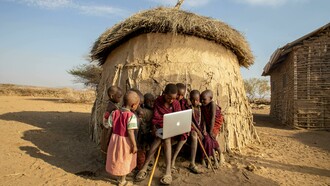We value a land of democracy, beauty, wilderness, liberty, economic opportunity, and the pursuit of happiness. Our land is democratic: free from taxation without representation and welcoming those coming from totalitarian regimes. We cherish the beauty of our splendid country and recognize the need to conserve our wilderness and environment. Liberty is highly valued in many ways, from freedom of movement to freedom of expression. The possibility of the self-made individual expresses our dream of economic opportunity. All of these dreams together make possible the pursuit of happiness. Each of us holds a personalized version based on our emphasis on different values, but we are all Americans, and our dream is ongoing. We need to build and improve on that vision. Investing in climate improvements can rekindle the American dream! Let us explore the ways.
We have a dream of a beautiful America with ample green spaces
These spaces should be near us, within walking distance from home or work. Green areas make us happy, and their health benefits are numerous. A recent review and meta-analysis of 143 studies in 20 countries shows that living near green space is associated with a lower incidence of type II diabetes, cardiovascular mortality, high blood pressure, salivary cortisol, heart rate, heart rate variability (HRV), HDL cholesterol, stroke, hypertension, dyslipidemia, asthma, and coronary heart disease (Twohig-Bennett and Jones, 2018). Public spaces with facilities for exercise improve the health of nearby residents. Trees help diminish atmospheric pollutants, lessen the heat island effect, and alleviate stress and sleep disturbance by providing a buffer against traffic noise. Studies have also found a correlation between visiting green areas and boosted immune response. There are such widespread benefits that the availability of green space for everyone is becoming a key parameter of urban planning. Innovative ways to add more green areas include creating mini-forests, planting food forests, and transforming parking places into pocket parks. Many of our cities have started new plans for green areas: join your neighborhood in getting green near you.
This idea has been extended to the concept of a "green city"
This includes objectives such as reducing private traffic, creating more bicycle lanes, and improving water, energy, and waste management, in addition to a higher density of green areas. The Arcadis Sustainable Cities Index rates such cities worldwide; Seattle, San Francisco, Los Angeles, and New York are in the top 15 (Arcadis, 2022).
You may find your location among the 50 most green cities in the US described with brilliant photos and brief commentaries. Minneapolis reserves 15 percent of its urban area for parkland, and 95 percent of its residents live within a ten-minute walk of a park. Minneapolis was ranked number one, followed by Kansas City, the “Paris of the Plains," looking to expand its green space. Cincinnati came in third with more than 115,000 acres of protected green space. A more restrictive classification includes the 15 most environmentally friendly cities. Some of the best urban bike paths are found in Aspen, Albuquerque, Dallas, Madison, Fort Collins, Boston, Atlanta, Seattle, Sacramento, Steamboat Springs (Colorado), and Austin.
We have a dream and tradition of conservation of our territory
One hundred and fifty years ago, the US Congress created the world's first national park by setting aside 3,400 square miles of land in Idaho, Montana, and Wyoming to establish Yellowstone National Park. Later President Teddy Roosevelt (a Republican) became a prominent conservationist, putting the issue high on the national agenda. His efforts were aimed not just at environment protection but at ensuring that Americans, as a whole, benefited from the country's natural resources. Today we have 401 national park areas, but we have only begun the broader effort of conservation. "There is no single way to do conservation. Restoring ecosystems, fighting climate change, regulating hunting and fishing, eliminating pollution, helping dead trees beat deadly diseases, moving plants and animals to cooler habitats, killing introduced predators – all can play a role. But the core idea is very straightforward: plants and animals need somewhere suitable to live” (Marris, 2022 p 18). The threat is habitat loss. The National Geographic Society has determined the areas where conservation would offer the greatest benefit to people and nature based on four criteria: providing clean drinking water, saving wildlife, preserving ecosystem diversity, and trapping carbon (ibid). Urban and rural planners could benefit from this comprehensive approach.
Conservation is a popular and bipartisan issue
It should be approached it that way. First, we should consider areas that are easier to protect and where we can agree; and then move on to the more contentious ones, including locations where people are using the land or sea to make money. It is this American dream of wilderness that we are re-setting. According to National Geographic, some of the most successful projects have included diverse voices in decision-making and an emphasis on safeguarding cultural heritage and nature. In Montana, the Salish and Kootenai tribes are restoring the white-bark pine forests, El Paso is working to restore the Castner Range, Nevada residents are collaborating to protect public lands, Memphis and 72 other cities are turning schoolyards into neighborhood parks, and Philadelphia residents are saving abandoned sanctuaries such as the John Heinz National Wildlife Refuge. Every community can make improvements in the conservation of its environment.
Economic opportunity, in the form of the self-made individual, is an essential part of the American dream
Ongoing transitions in the energy supply and energy efficiency sectors are poised to bring profound additions and shifts in employment. Princeton University’s excellent study, “Net-Zero America: Potential Pathways, Infrastructure, and Impacts," supports a net increase of 300,000 to 600,000 jobs by 2030 relative to the business-as-usual scenario (Larson et al, 2021). In the long term, there could be a net gain of 2.4 to 5.0 million jobs by 2050. Employment losses in the fossil fuel sectors are compensated by significant job increases in low-carbon sectors. This helps increase social mobility. Additional stimulus will come from the recent passage of the Inflation Reduction Act that provides for the spending of $490 billion, mainly for developing renewable energy and reducing the impact of climate change (Paris et al, 2022).
Achieving this new employment will require additional education, certification, and vocational training, along with targeted upskilling for the new and existing workforce. Recently the International Energy Agency released a report compiling such case studies worldwide (IEA, 2022). In the US, the Power Initiative, together with Appalachian Development Commission, are reviewed for their initiatives in the coal sector. The International Renewable Energy Agency maintains that the critical issues for building the skills for the energy transition comprise what is currently being taught, how it is being delivered, and to whom it is being taught (Elsayed, 2021). It is necessary to construct this data framework for the US, perhaps under the direction of the Department of Labor.
The questions raised by the energy transition may become part of our intellectual and emotional redefining and sharpening our ideals
Our freedom of expression is expanding. Mass media is beginning to evolve. As The Guardian reports, “The upcoming Apple TV+ anthology drama Extrapolations, starring Meryl Streep, Edward Norton, and Marion Cotillard, is billed as an exploration of "how the upcoming changes to our planet will affect love, faith, work and family on a personal and human scale.” Hulu’s Indigenous American teen comedy-drama Reservation Dogs features Dallas Goldtooth, an advocate for the Indigenous Environmental Network, and includes references to the Land Back Indigenous sovereignty movement, which is part of a wider climate justice movement.” (Gammon, 2022 p1). Research indicates that people underestimate how much others care about climate change. About 70 per cent of American adults say they are alarmed or concerned about the climate transition, but they’re not talking about it. Only one third report discussing the topic with their friends or family. This creates feelings of anxiety and isolation. According to media expert Anna Jane Joyner, "Television and film can do a lot to assuage that because it validates the audience's experiences and feelings. It means that climate storylines can be comedic, absurd, or dramatic.” In fact, Joyner finds doom and apocalypse plotlines to be limiting, and that “people need more stories about the future we do want” (ibid, p 2).
“Showing that the climate crisis is real, and happening now, can galvanize audiences to act,” reports Max Boykoff, a researcher at the University of Colorado Boulder who studies climate change communication. “Even in the last few years, we’ve been seeing this more and more – not just futuristic portrayals that are talking about climate change but showing where we live and what’s going on right now,” he says. “This isn’t just about sacrifice. This can be about innovation, it can be about opportunity, it can be about actually having fun” (ibid, p 3).
Indeed, we might well ask, is an embellished American dream emerging?
References
Arcadis, (2022). The Arcadis Sustainable Cities Index 2022: Prosperity beyond Profit.
Elsayed, S., (2021). Skill Building for the Energy Transition. IRENA Insights, Webinar Series.
Gammon, K., (2022). ‘This is part of our world now’: can TV shows adequately reflect the climate crisis?. The Guardian.
International Energy Agency, (2022). Skills Development and Inclusivity for Clean Energy Transitions. IEA.
Larson, E., Greig C., Jenkins J., Mayfield E., Pascale A., Zhang C., Drossman J., Williams R., Pacala S., Socolow R., Baik EJ, Birdsey R., Duke R., Jones R., Haley B., Leslie E., Paustian K., and Swan A., (2021). Net-Zero America: Potential Pathways, Infrastructure, and Impacts, Final Report Summary. Princeton University, Princeton, NJ.
Marris, E., (2022). America in a new light, National Geographic.
Paris, F., Parlapiano, A., Sanger-Katz, M., Washington, E., (2022). A Detailed Picture of What's in the Democrats' Climate and Health Bill. The New York Times.
Twohig-Bennett, C., Jones A. (2018). The health benefits of the great outdoors: A systematic review and meta-analysis of greenspace exposure and health outcomes, Environmental Research. Volume 166, Pages 628-637.















